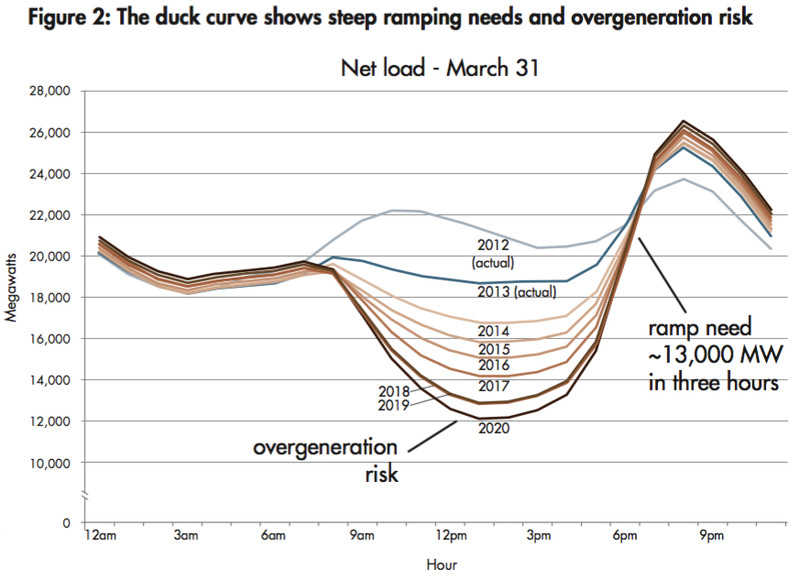RegGuheert
Well-known member
It seems the natural gas leak in Aliso Canyon may result in severe issues providing electricity in southern CA this summer:

Reading that post does not make it at all clear to me why residents should expect to go without electricity for a total of fourteen days this summer. I would expect that conservation measures could reduce or eliminate the need for outages. I guess we'll know soon enough.
ETA: I guess CAISO does have a plan which they think will work. According to the Business Insider article linked from the blog post:
One concern discussed in this blog post is that the natural gas generators are critical for providing power during the steep ramp-up portion of the solar-induced duck curve:Energy Matters said:The California Independent Service Operator (CAISO), which manages the California grid, estimates that as a result all customers should expect to be without power for a total of 14 days this summer. Some 21 million Southern Californians stand to be directly affected.

Reading that post does not make it at all clear to me why residents should expect to go without electricity for a total of fourteen days this summer. I would expect that conservation measures could reduce or eliminate the need for outages. I guess we'll know soon enough.
ETA: I guess CAISO does have a plan which they think will work. According to the Business Insider article linked from the blog post:
Business Insider said:"We are confident we have a strong plan in place to meet the operational challenges posed by the upcoming hot temperatures," ISO CEO Steve Berberich said, adding that consumer conservation efforts would be key.
